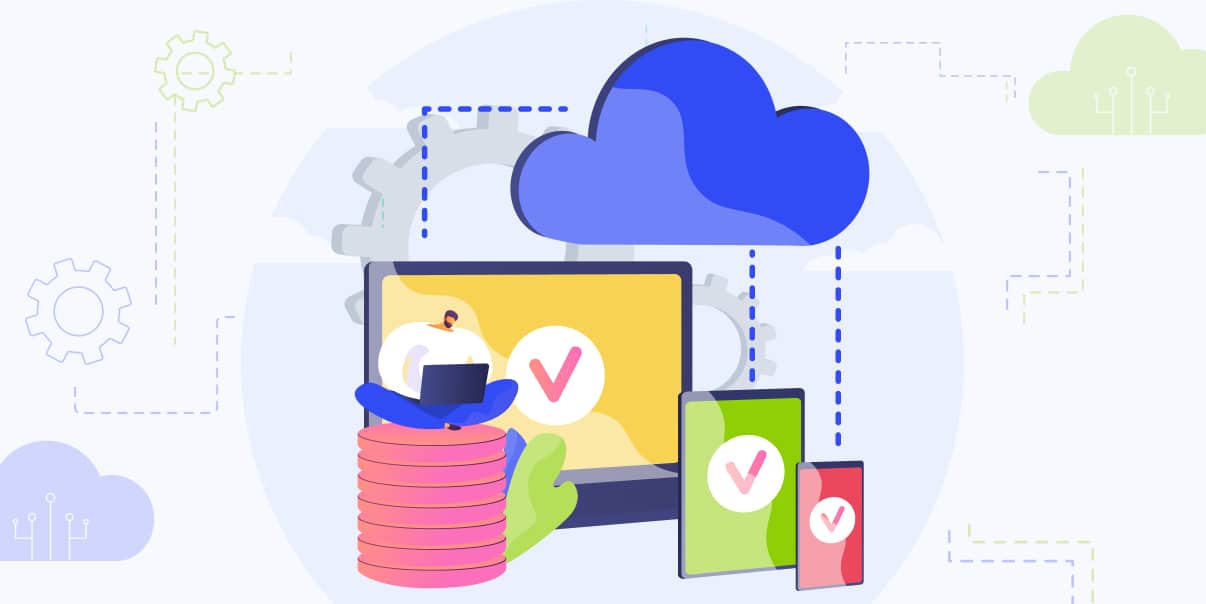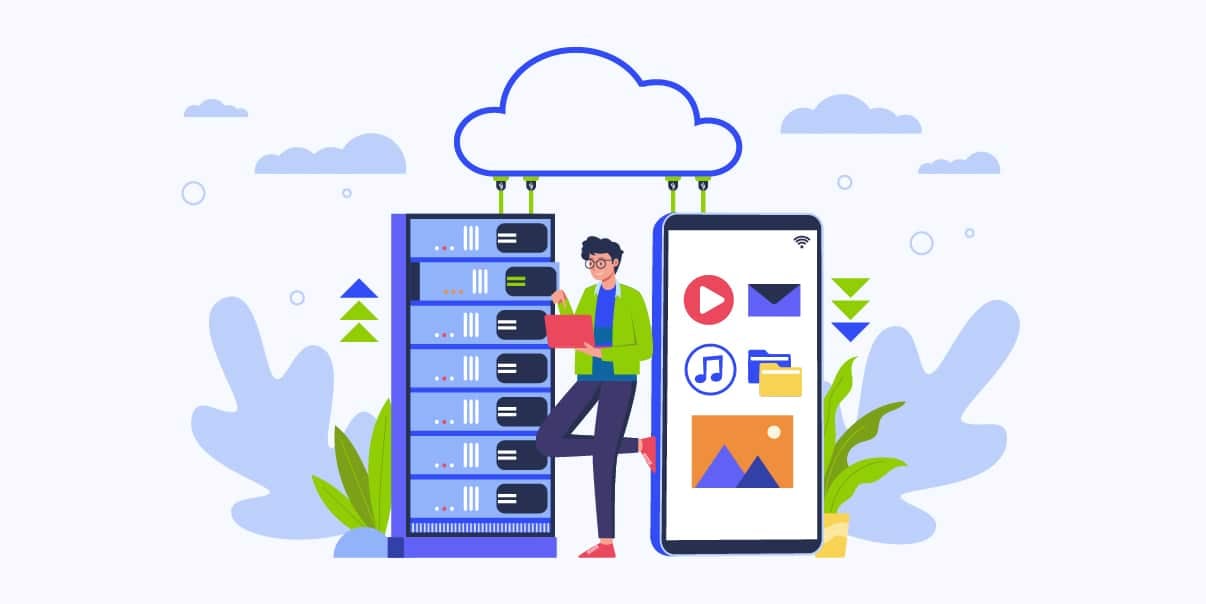Vertical vs. Horizontal SaaS: Main Differences Explained

Being a product owner or developer takes effort. You need to think carefully about how to scale your product, which is crucial for your business’s success.
Vertical SaaS and horizontal SaaS are two different ways to scale your product. Vertical SaaS focuses on solving problems in one industry. On the other hand, horizontal SaaS takes a broad approach that works for multiple industries.
The success of SaaS solutions depends on the approach you take. Think about which SaaS model would fit your product and customer base best before you decide on a solution.
This article will discuss the differences between vertical and horizontal SaaS and their advantages and disadvantages. We’ll also explore how each method affects customer acquisition strategies, pricing models, scalability, and more.
What Is Vertical SaaS?
As mentioned above, vertical SaaS providers focus on giving the best solutions to a particular industry. Vertical SaaS products are designed to meet customers’ needs and better understand their market. These products are becoming more popular as businesses move online. Still, they have a smaller target audience since they’re tailored to a specific niche.
Vertical SaaS has fewer competitors, so customers rely more heavily on it than on other options. It provides an excellent opportunity to satisfy a limited but more dependent user base. This SaaS model is more focused and has a higher potential for success as businesses can hone in on what works best for that industry.
Examples of Vertical SaaS
Vertical SaaS businesses are in almost any industry. Here are some vertical SaaS examples:
- Freshworks: This vertical SaaS platform provides cloud-based customer service and contact center solutions. It offers AI-powered chatbot automation, call center analytics, CRM integrations, ticketing systems, and more. Freshworks also has a range of analytics tools to help monitor customer engagement and feedback over time. Additionally, its automation features help teams streamline their workflows and save time.
- ServiceNow: This platform helps companies manage HR, IT operations, security, and other processes. It allows them to follow laws and regulations, handle customer service cases, count inventory items, and more.
- SAP Concur: It lets businesses manage employee spending, travel expenses, and invoices. It can link to other software like Quickbooks and Salesforce so companies can easily stay in control of their finances. It also has reports to help companies check and learn how they spend money over time.
- Smartsheet. This vertical SaaS platform helps businesses organize projects, work with teams, and share reports. It offers tools to set tasks, track progress, and collaborate on projects within one application. Smartsheet also provides automated notifications and reminders to keep team members informed and on the same page.
Pros of the Vertical SaaS Model
Fewer Competitors
Vertical SaaS is a newer model, and fewer companies are using this. It allows businesses to focus on their core functions and tailor their products to the needs of their customers. You can create a unique solution for that industry and have fewer competitors.
Bigger Market Share
Since there are fewer competitors, it’s easier for companies to become the leading vertical SaaS provider in the field. It can give you a good reputation and help you get more customers. A vertical SaaS company also has access to more specialized resources and expert knowledge that can better serve your target market.
Lesser Risk of Customer Loss
Vertical SaaS allows businesses to understand their customers’ needs in-depth. It helps them create better customer experiences, higher customer success, and better satisfaction rates. Vertical SaaS also has a lesser risk of customers leaving because it’s made specifically for the customer’s industry.
Cons of the Vertical SaaS Model
Difficult To Scale and Expand
Vertical SaaS solutions may be limited in terms of scalability and customer acquisition. Vertical SaaS can be hard to scale if the market is very small. Before developing SaaS applications, research how many potential customers you have in that particular segment.
Hard To Improve Brand Awareness
It can be harder to make people aware of your vertical SaaS product outside of that one industry. People will likely talk about it in the same industry, so it may take longer for people to recognize your brand.
What Is Horizontal SaaS?
Horizontal SaaS takes a broader approach by catering to multiple industries. A horizontal SaaS company provides solutions across many different sectors. It can offer a more comprehensive range of services than vertical SaaS models. It allows them to reach out to more extensive customer bases and appeal to a broader range of customers. It also makes them more flexible in pricing models and scalability.
Examples of Horizontal SaaS
There are many horizontal SaaS companies in numerous industries. Here are some horizontal SaaS examples:
- Dropbox: Dropbox is a horizontal SaaS provider that enables users to store, share and sync their files. It serves customers from multiple industries, including finance, education, and healthcare.
- Slack: Slack is a communication tool for teams in different sectors, such as technology, business services, retail, and more. It offers a platform where team members can chat online in real-time or send messages to each other within the workspace environment.
- HubSpot: This horizontal SaaS business provides products to help with customer service operations for banking, telecommunications, retail, and more. It has features like custom reports or task automation capabilities such as AI predictive lead scoring models for marketing personnel.
- Salesforce: This platform provides software solutions designed to help sales teams be more efficient. The CRM software package helps sales teams keep track of their customers and potential customers. Other features like custom reports or task automation can help marketing personnel predict which leads are most likely to turn into customers.
- Zendesk: This platform provides SaaS products to help customer service operations in different industries like banking, telephone companies, and retail stores. It helps make work easier by allowing customers to access support quickly and easily through chatbots or phones.
Pros of the Horizontal SaaS Model
Large Pool of Potential Customers
Horizontal SaaS works with many industries. A horizontal SaaS product lets you reach more potential customers because you don’t have to tailor your content to a tiny group. For example, Salesforce is a horizontal SaaS business that offers customer relationship management software. Finding new people who would use your service this way may be easier.
Easy To Grow Brand Awareness
Horizontal SaaS services are not ideal for a small group, so it’s easier to find new users with this approach. Additionally, customers become familiar with the brand faster due to its general use in multiple fields, making it quicker to sell and grow brand recognition.
Cons of the Horizontal SaaS Model
Lack of Specialized Knowledge
Horizontal SaaS takes a “one-size-fits-all” approach, which means it can be difficult to tailor the product to meet each customer’s needs. Additionally, horizontal SaaS businesses may lack specialized knowledge in specific industries. They may not offer as comprehensive solutions as vertical SaaS models.
More Competitive Market
If you use the horizontal approach, you’re competing against companies that have been doing it for a long time. This issue might make it challenging to stand out in the SaaS industry.
Vertical SaaS vs. Horizontal SaaS: Major Differences
Business Model
A business model explains why the company believes customers should pay for their products and services. Vertical SaaS solutions focus on a single industry, like real estate and healthcare. They offer an all-in-one solution for that particular industry. Examples of vertical SaaS companies are Zillow (real estate) and ZocDoc (healthcare).
Horizontal SaaS provides solutions that many companies in any industry can use. Some examples are payroll or calendar scheduling software – think QuickBooks, WhenIWork, etc.
Target Market
Horizontal SaaS companies offer generic products or services for different customers, which makes it easier for new customers to join.
Meanwhile, vertical SaaS has lower marketing expenses because the audience is limited. So it’s crucial to determine which niche market needs your solution.
Marketing
Vertical SaaS focuses on customer retention, while horizontal SaaS concentrates on getting new software users. The goal of horizontal SaaS is to get as many people using their product as possible. They offer their software at a low or free cost, then ask customers to pay extra if they need more features.
Vertical SAAS companies build their product specifically for a specific group of people. They also focus on keeping loyal customers over time by offering free trials before buying the software.
Growth Prospects
When it comes to growth potential, horizontal SaaS has an advantage. It can sell its product to everyone in the industry, so there is no limit on how many customers it can have. Vertical SaaS focuses on one area of their industry. It means they can only reach certain people with particular needs, which limits the number of customers they can get.
Which Approach Is Right for Your Application?
The answer depends on your objectives and what you want to do with your app. Vertical SaaS tailors their products to meet the needs of its customers. Horizontal SaaS provides more flexibility and scalability potential but may also require a broader understanding of multiple industries. Ultimately, assessing both approaches is vital before deciding which is right for your business.
Vertical vs. Horizontal SaaS FAQs
What is software-as-a-service (SaaS)?
Software as a Service (SaaS) delivers software solutions over the internet, usually on a subscription basis. It allows customers to access the application without installing or managing hardware or software.
It makes it easier to use cloud-based apps, and it’s becoming more popular with all kinds of businesses. With SaaS, you don’t need to worry about hardware or software on your computer.
How many SaaS companies are vertical? How many are horizontal?
The number of vertical SaaS companies is increasing every year. Vertical SaaS businesses focus on providing solutions to a particular industry. At the same time, horizontal SaaS consists of products used across multiple industries. Vertical SaaS holds about 60 percent of the market share, and horizontal SaaS accounts for 40 percent.
What is the difference between vertical and horizontal software?
Vertical SaaS solutions focus on a single industry, while horizontal software is used across multiple industries. Vertical software provides users with tailored features and functions specific to their needs. At the same time, horizontal SaaS solutions offer more general solutions that anyone can use.
BIT Studios is a leading provider of software solutions in the thriving SaaS industry, including horizontal and vertical software. So if you’re looking for the best SaaS solution, contact our experts today.
We’re BIT Studios!
At BIT Studios we specialize in designing, building, shipping, and scaling beautiful, usable products with blazing-fast efficiency



